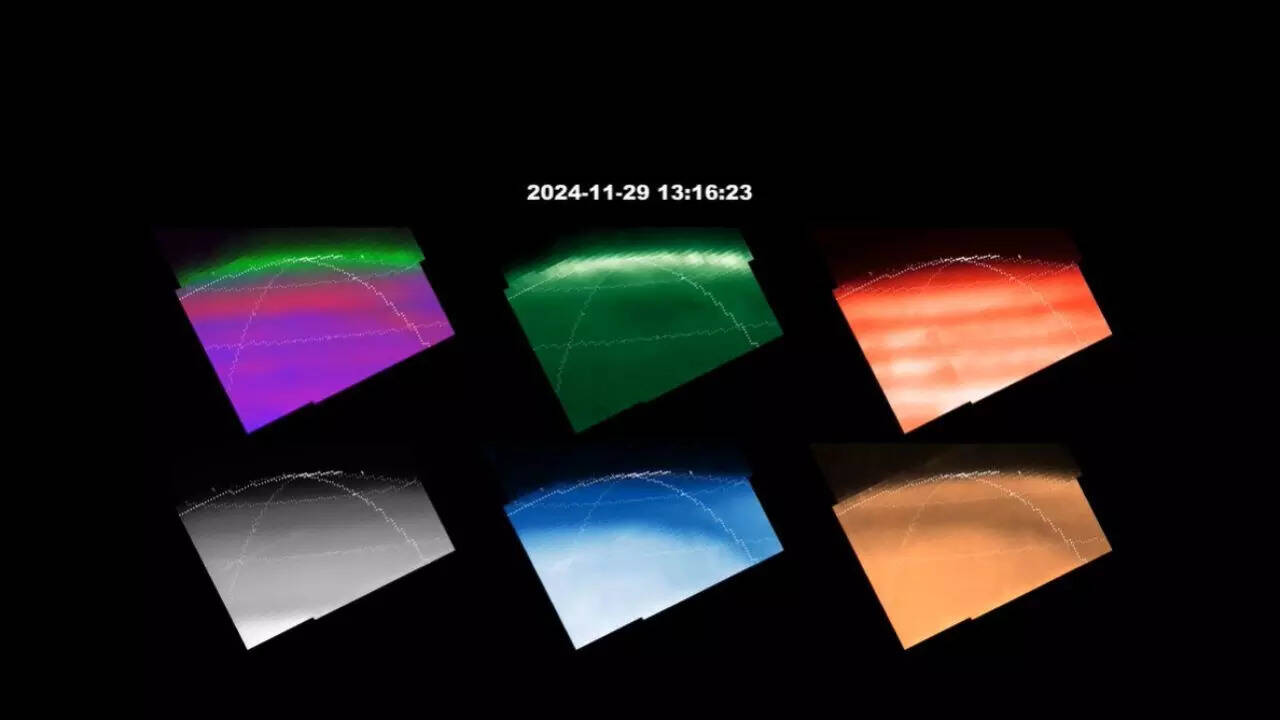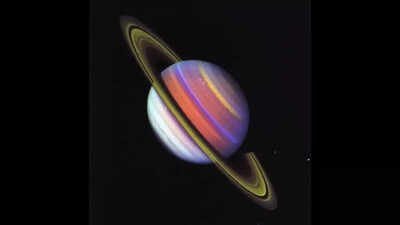Saturn, The Majestic Sixth Planet from the Sun, is renovated for its spectacular rings and enigmatic hexagonal story at the North Pole. Recently, Nasa’s James Webb Space Telescope (JWST) Reveled Astonishing New Details in Its Upper Atmosphere, Capturing Phenomena Never Before Seen on PLANET. Scientists Detected Drifting “Dark beads” in the ionosphere and a peculiar lopsided star-shaped pattern in the stratosphere. These two strange features, thought separated by hundreds of kilometres in altitude, may be interconnected and posesibly linked to Saturday’s iconic hexagon. Webb’s Near-infrared imaging has offered an unprecedented glimpse into the hidden dynamics of this gas giant.
Mysterious Dark Beads and Lopsided Star in Saturn’s Skies: James Webb Space Telescope’s Astonishing Find
The James Webb Space Telescope (JWST), Using Its Near-Infrared Spectrograph (Nirspec), HAS Uncovered Surprising New Structure in Saturn’s Upper Atmosphere. According to a study published in Geophysical research letters.In the ionosphere, about 1,100 km Above the cloud tops, JWST detected Dark, Bead-Like Patterns Drifting with the bright aurial glow. Lower down in the stratosphere, it revled a lopsided, four-armed star pattern extending from the North Pole, Possibly Linked to the Famous Hexagonal Storm. Remarkably, the brightest star arm aligns with the ionospheric bead region, hinting at a connection between atmospheric layers.These Fine-Scale Features, Never Before Seen on Any Planet, Challenge existing models of saturn’s atmosphere and raise new questions about its magnetic and atmospheric dynamics.
A mysterious webb discovery of dark beads in saturn’s ionosphere

Source: geophysical research letters
The ionosphere, 1,100 km Above Saturn’s Surface, is a layer of electrically charged plasma. JWST DATECTED DARK BEAD-Like Features Embedded In Bright Aurral Halos. These beads remained stable for hours and drifted slowly over time.Scientists sugges these beads may be caused by complex interactions Between Saturn’s Magnetosphere and its rotating atmosphere. If confirmed, this could offer new insights into how energy flows through the planet’s upper layers, influencing aurral activity and atmospheric dynamics.
Lopsided star pattern in the stratosphere
About 500 km below the ionosphere, in saturn’s stratosphere, webb observed an asymmetric star-shaped structure extending from the North Pole Toward the Equator. Interestingly, only four of the expected Six Arms was visible, creating a lopsided star.The star’s arms appear to overlay the points of saturn’s famous hexagonal story, suggesting a passible connection between the upper and lower atmospheric layers. Scientists are still unsure why the arms flow toward the equator or whose two arms are missing, but these features bill indicate previously unknown atmospheric proceeds.
Probing Saturn’s Atmosphere: Hydrogen Ions and Methane Under Webb’s Lens
The James Webb Space Telescope’s Near-Infrared Spectrograph (Nirspec) allowed scientists to study saturn’s upper atmosphere in unprecedent detail. By observing emissions from positively charged hydrogen in the ionosphere and methane in the stratosphere, resurcres mapped how these gases behave at different altitudes. Hydrogen Drives Energy Transfer in the Ionosphere, While Methane Influences Stratospheric Chemistry and Circulation. Detecting Both Simultaneously Reveled Vertical Connections, Offering Insights INTO Auroral Energy, Atmospheric Chemistry, and the Formation of Unusual Features like Drifting Beads and The Lopped Star Pattern Above Saturn’s Hexagon.
Possible Connection to Saturn’s Hexagon
Saturn’s Hexagonal Storm, First Discovered by the Voyager Spacecraft in the 1980s, is a person who Six-Sided Cloud Pattern Around the North Pole. The JWST observations sugges that the dark beads in the ionosphere and the lowered star in the stratosphere may be linked to the hexagon.Professor Stallard Notes, “The Darkest Beads Align with the Strongest Star-Arm, but it’s not yet clear if this is coincidental or evidence of coupling between atmospheric layers. Connected processes stretching from the hexagon up through the stratosphere and into the ionosphere. “
Implications for Planetary Science
These discoveries have major implications for undersrstanding gas giant atmospheres, not just on saturn but on other planets as well. The unique structures challenge current models of atmospheric dynamics and may help explain how Aurraras, Winds, and Storms Interact on Large Planets.Future observations by jwst, particularly during saturn’s equinox, when the planet’s orientation to the sun changes, will be crucial for understanding how these structures evolve over time.Also read | Nasa Shares 8 Jaw-Dropping Milky Way Images Revealing The Galaxy’s Hidden Wonders



